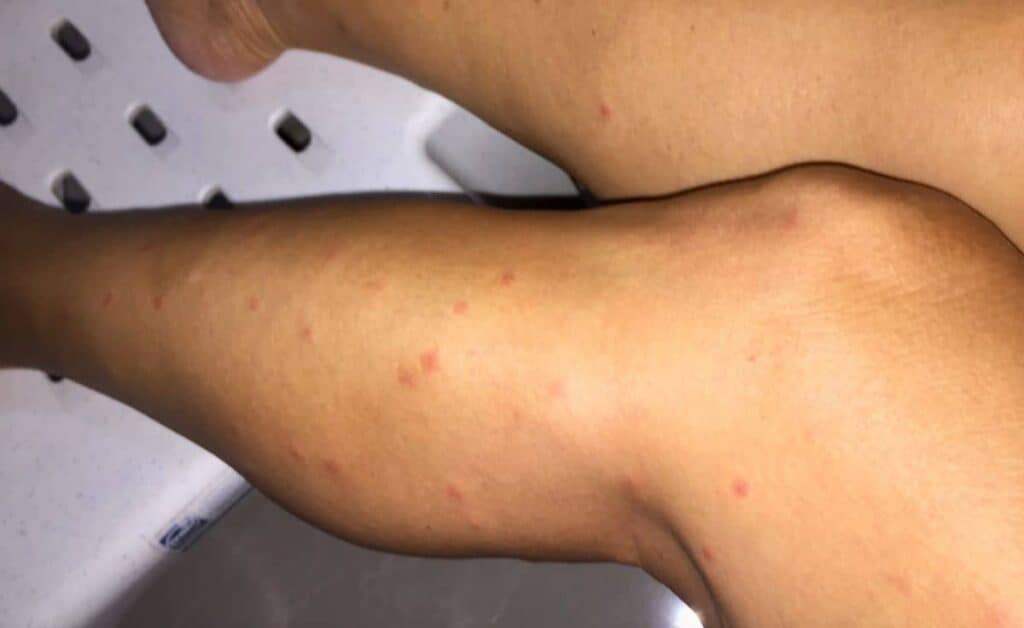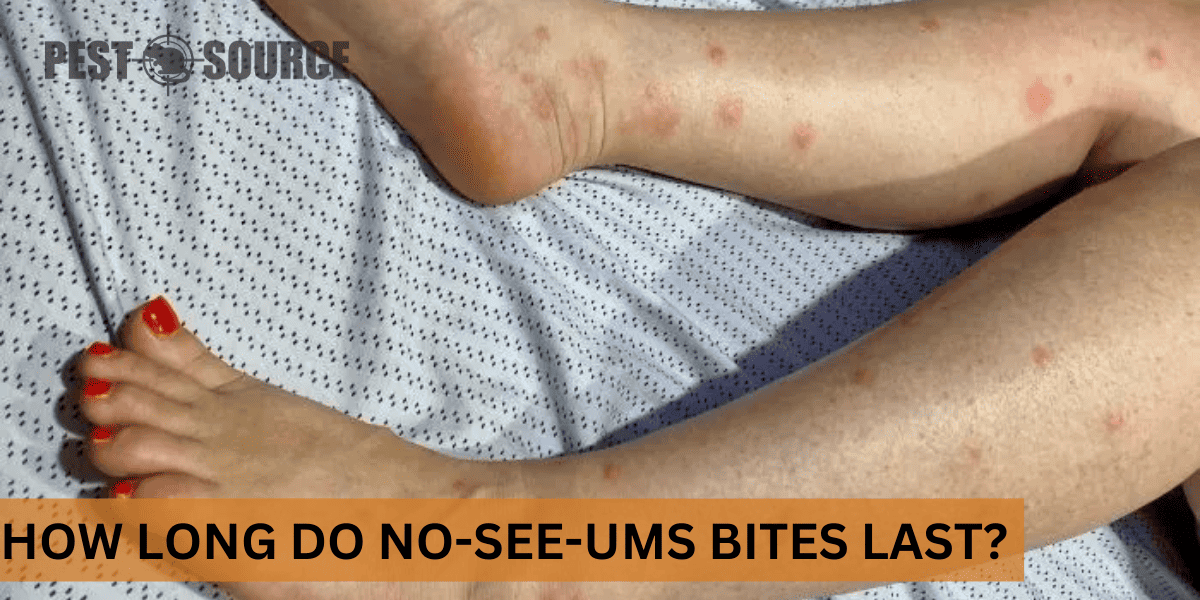In the world of pests, the no-see-um flies undoubtedly live up to their name: they’re small enough to escape your notice but their bites are painfully unforgettable. While these tiny flies might fly under your radar, their bites can leave you with itchy, painful welts that linger far longer than you’d like. The burning question then, is: “How long do no-see-um bites last?”.
In this article, we’ll dissect everything you need to know about the duration and treatment of no-see-um bites, and most importantly, how to prevent them, ensuring you’re well-equipped to tackle these tiny pests head-on.
POINTS
- No-see-um bites can cause painful and itchy welts on the skin, and the itchiness is due to the immune system’s response to the saliva introduced by the insect during the bite. The symptoms of the bites can vary among individuals due to factors such as sensitivity to insect bites, the strength of immune response, age, and overall health.
- The discomfort and itching from no-see-um bites can last from a few hours up to two weeks, largely depending on the individual’s immune response to the bite.
- Immediate treatment of no-see-um bites includes washing the bite area with soap and warm water, applying a cold compress or ice pack, and avoiding scratching. Over-the-counter solutions such as hydrocortisone creams and calamine lotion can also help to alleviate the itching.
- Precautions to prevent no-see-um bites include applying insect repellants, wearing protective clothing, installing fine mesh screens on windows and doors, and removing standing water in your yard.
- If the symptoms of the no-see-um bite worsen, become unbearable, or signs of infection occur, it’s essential to seek immediate medical attention.
Getting to Know No-See-Ums Bites
What Are No-See-Um Bites, and Why Are They a Concern?
No-see-ums are tiny, biting flies (also known as biting midges) that are virtually invisible to the naked eye, hence their name. Despite their small stature, their bites leave a mark that is hard to forget: painful, itchy welts that can be unbearable if not treated promptly. They are frequently spotted during dawn and dusk and thrive in moist, vegetative areas.
The concern surrounding these minuscule pests extends beyond the discomfort caused by their bites. Their itchiness can trigger a desperate need to scratch, which exposes the skin to secondary infections. Moreover, in rare cases, some people may experience severe reactions to no-see-um bites, requiring immediate medical attention.
What Are the Common Symptoms of No-See-Um Bites?

Characteristically, a no-see-um bite appears as a cluster of small welts on the skin. The intensity of the bite varies from person to person. For some individuals, the initial pain of the bite swiftly transitions into a bothersome itch that can last an hour or two. For others, the discomfort lingers for days or even weeks.
The common symptoms associated with a no-see-um bite include:
- Redness around the bite area
- Inflammation, resulting in the formation of small welts
- Intense itching
- A burning sensation
- In rare cases, a bull’s eye pattern around the bite
If these symptoms persist or become severe, seek medical assistance immediately. While no-see-ums are not known to carry diseases in the U.S, they can pose severe health risks worldwide.
The Duration of No-See-Um Bites
How Long Do No-See-Um Bites Typically Last?
The distress from a no-see-um bite can unfortunately linger with us past our encounters with these miniscule pests. Usually, the discomfort, redness, and itching associated with no-see-ums subsides within a few hours to a couple of days. However, for some unlucky individuals, especially those sensitive to insect bites, the symptoms may persist for up to two weeks.
How Long Do No-See-Um Bites Itch, and What Contributes to the Itching?
The discomforting itch of a no-see-um bite is a significant concern for most victims of this pest. In most cases, the itching, much like the bite, lasts a few hours or a couple of days. Nonetheless, this timescale can extend to two weeks for those particularly sensitive to insect bites.
The itching from no-see-um bites can be attributed to a reaction to their saliva, which is introduced into the skin when the insect bites. The immune system responds to these foreign substances, leading to inflammation and itching.
How Can the Itching Duration Vary Among Individuals?
Given the immune system’s role in causing the inflammation and itching from no-see-um bites, it stands to reason that the duration of itching can vary widely among individuals. Factors such as an individual’s sensitivity to insect bites, their immune response, age, and overall health can all influence how long the itching lasts.
Some people may find their symptoms subside within hours, no longer troubled by the bites. However, individuals with a strong immune response or those with particularly sensitive skin may endure symptoms for a more extended period. Always monitor the bite location and consult with a healthcare provider if symptoms persist or worsen over time.
Treatment and Management of No-See-Um Bites
What Immediate Steps Can Be Taken to Treat No-See-Um Bites?
Seeking immediate relief for no-see-ums bites is crucial. The first steps for treating a no-see-um bite include:
- Wash the bite area with warm water and mild soap. This not only cleanses the skin but can also help alleviate some of the itchiness.
- Apply a cold compress or ice pack to the bite area. This can help reduce inflammation, thereby easing the discomfort and itching.
- Avoid scratching the bites. Scratching can lead to a break in the skin, making it more susceptible to infection or further irritation.
What Over-the-Counter Solutions Are Available to Alleviate Itching?

Over-the-counter products can provide temporary relief from the intense itching caused by no-see-um bites:
- Hydrocortisone creams often work well, as they can help to reduce the inflammation and soothe the itchiness.
- Calamine lotion is another common remedy. Applying it to the bite area can provide a cooling effect and reduce the urge to scratch.
- Oral antihistamines like Benadryl can be administered to counteract the allergic reaction that is causing the itching and the inflammation.
Bear in mind: each person reacts differently to these remedies, so what works best for one person may not work as well for another.
When Should You Consider Seeing a Doctor for No-See-Um Bites?
Primarily, home treatments and over-the-counter solutions sufficiently manage no-see-um bites. However, if the redness and swelling worsen, if the itching becomes unbearable, or if you see signs of infections such as pus or increased pain, it’s time to consult a healthcare professional. Additionally, people with severe or unusual reactions to no-see-um bites should seek medical attention.
Prevention and Precautions
What Can Be Done to Prevent No-See-Um Bites?
Prevention is always better than treatment. Steps to prevent exposure to no-see-um bites include:
- Apply insect repellants containing DEET or Picaridin, as these products create an environment unfavorable for no-see-ums. Ensure to apply it all over exposed skin and clothing for the best protection.
- Wear long sleeves, long pants, and hats to cover as much skin as possible, especially during dawn and dusk when no-see-ums are most active.
- Install fine mesh screens on windows and doors to restrict the entry of no-see-ums into your home.
- Periodically check and empty any standing water in your yard, as no-see-ums breed in moisture-rich environments.
How to Avoid Making No-See-Um Bites Worse by Scratching?
As tempting as it may be, try to avoid scratching the bite area. Scratching can cause further skin damage, leading to potential infection and also prolongs the healing process. To help curb the urge:
- Apply a soft bandage on the bite area. This provides a physical barrier to deter you from scratching.
- Over-the-counter anti-itch creams and calamine lotion can soothe the itch, thus reducing the urge to scratch.
- Distraction also helps! Keep your hands busy to distract from the urge to scratch.
Remember, preventative strategies and conscientious care can make a significant difference in managing no-see-um bites.
Dealing with Persistent No-See-Ums Bites
If you’re struggling with the annoying aftermath of no-see-ums bites, you may be wondering how to get rid of the pests themselves. These bites can last longer than expected and can become a major nuisance. The key to alleviating the discomfort of no-see-ums bites is understanding how to control and eliminate these biting insects from your environment. Learn effective methods to rid yourself of no-see-ums and prevent future bites
Conclusion
Enduring a no-see-um bite is certainly an unpleasant experience due to the associated discomfort and relentless itching. Although these bites may typically last from a few hours up to two weeks, you can effectively manage and even prevent them with the right steps. From understanding their nature, treating their symptoms promptly, and mindful avoidance of scratching, to proactive preventive measures and knowing when to seek medical attention, you’ve got comprehensive strategies at your disposal. Remember, as unpleasant as they are, no-see-um bites can be tackled head-on with the right knowledge and approach.



